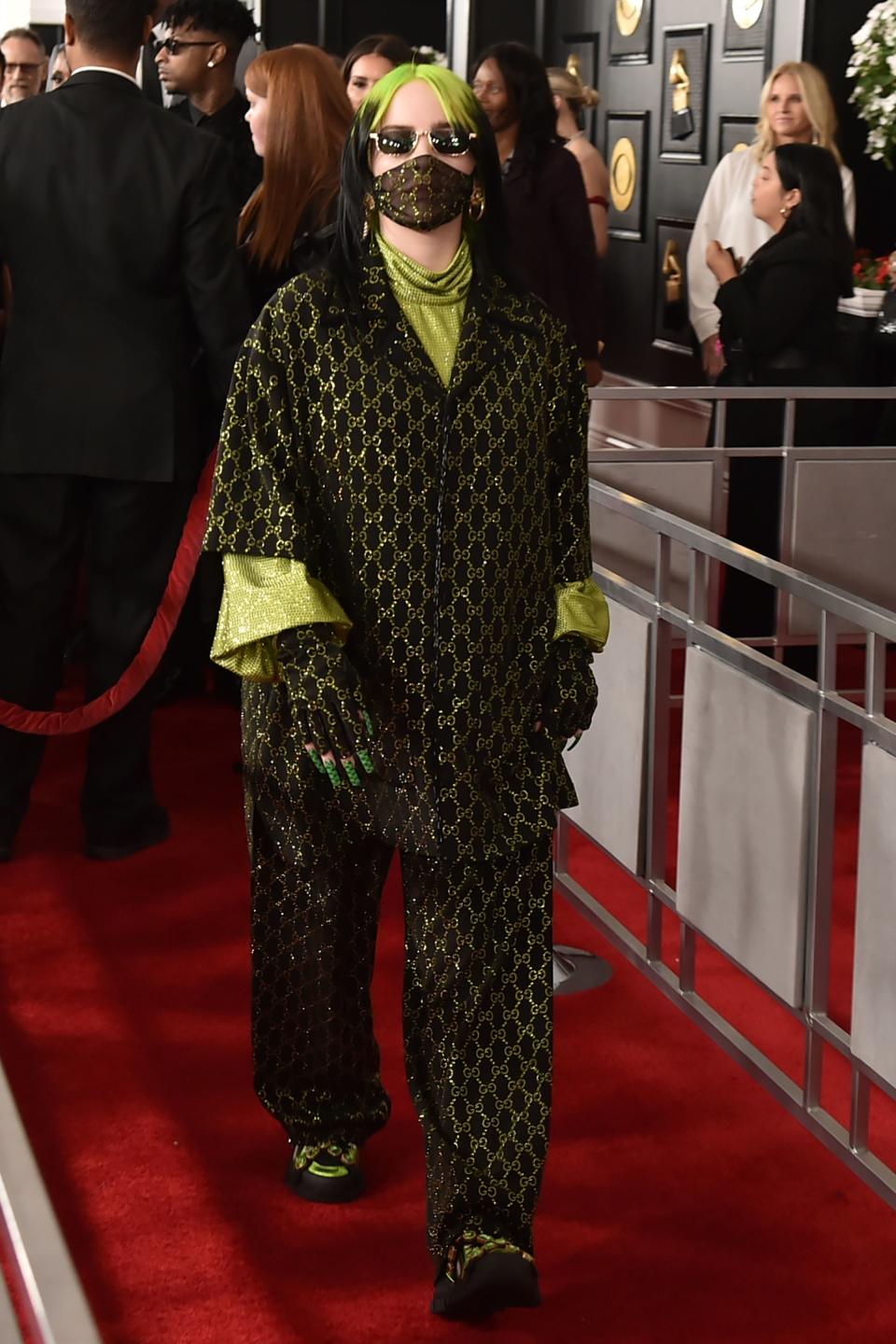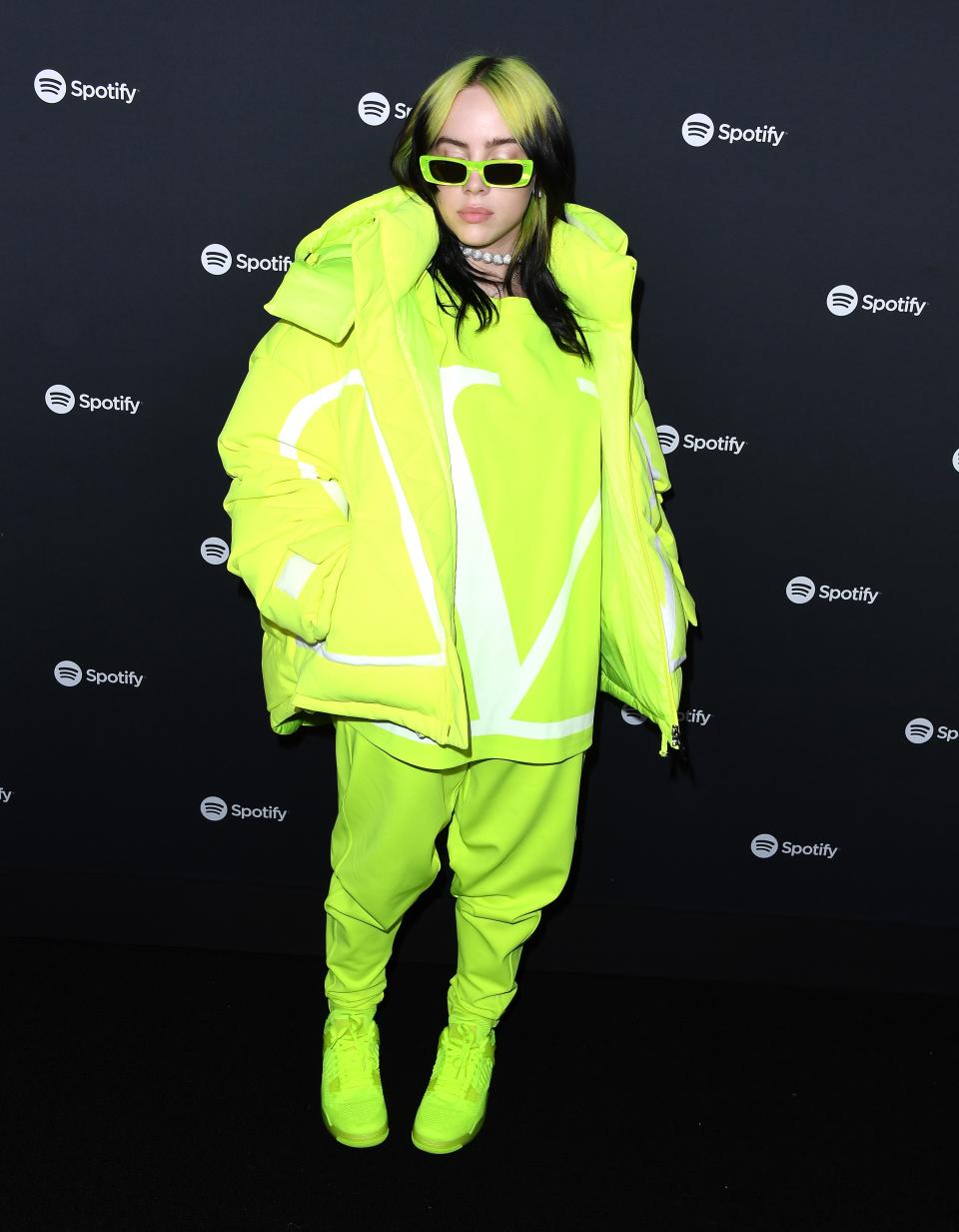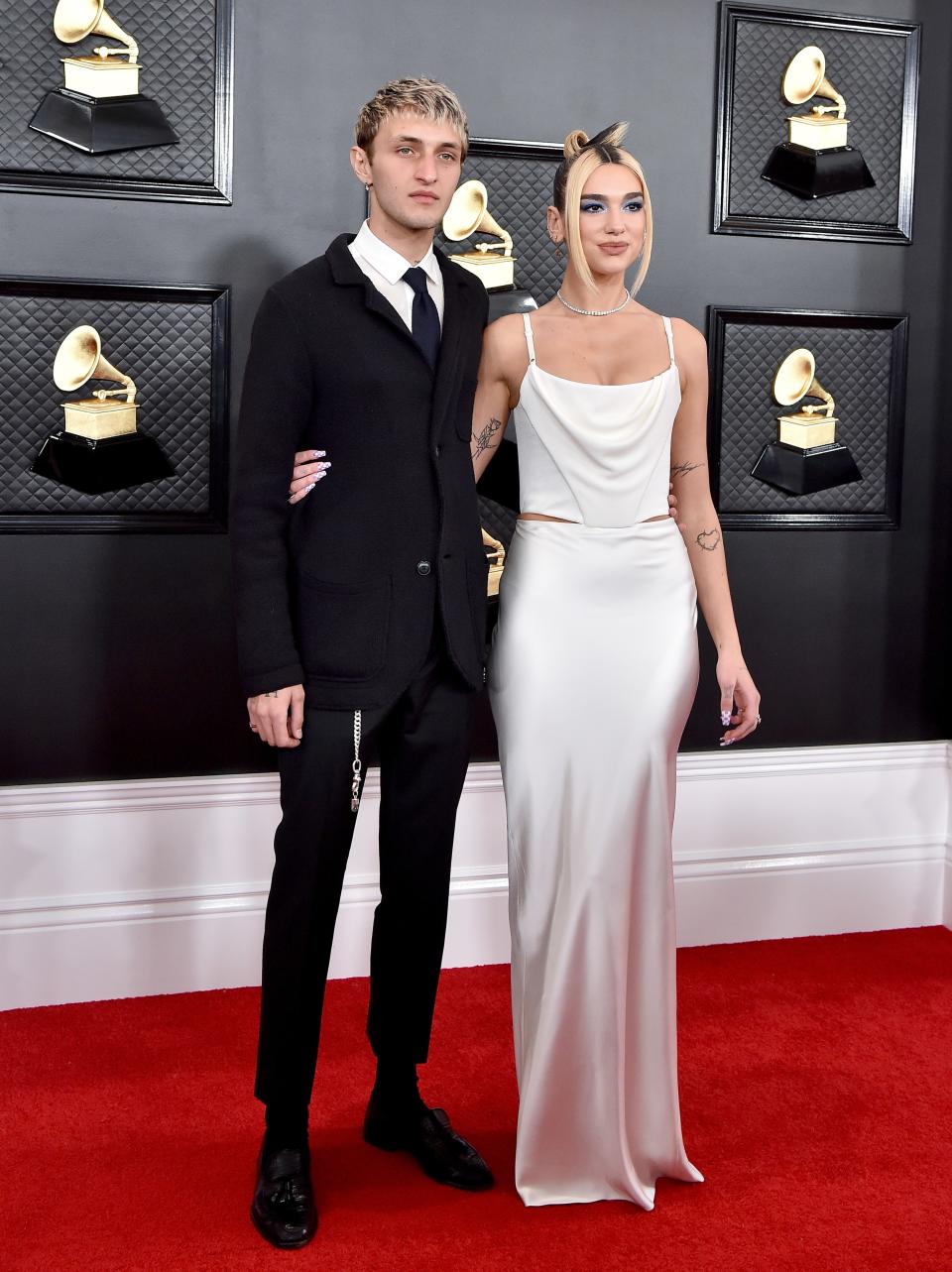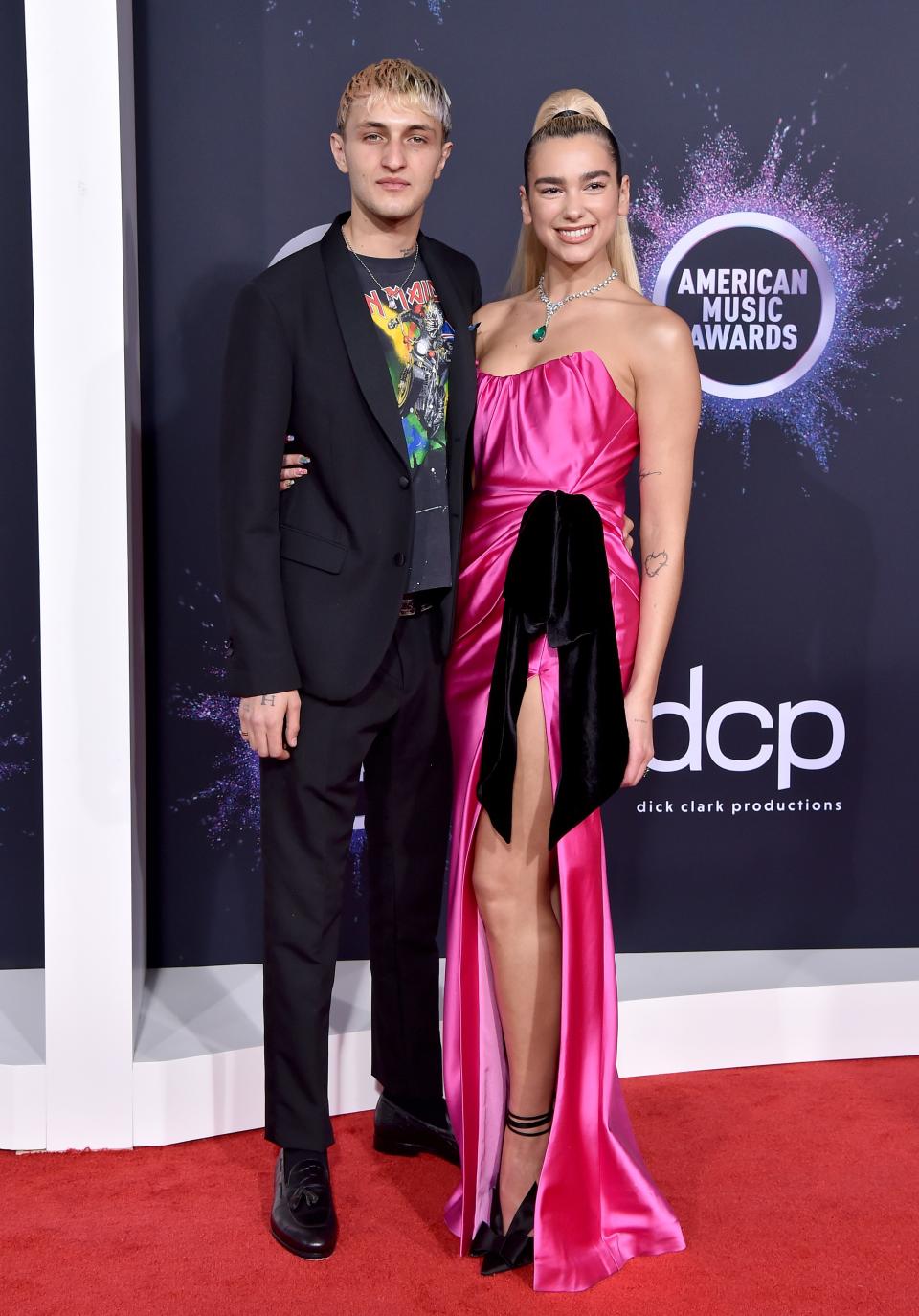Why Everyone Looks Like They’re Hanging Out at the Mall Now
“We are living in a simulation,” people like to say—about Mike Bloomberg, about fast food, about Tekashi69.
A counterpoint: what if we are all living in one giant mall?
A quick survey of pop music, social media, and fashion suggests that mall culture—unlike malls themselves—has never been more alive. Billie Eilish, who made the Gen-Z leap from teen-famous to boomer explainer-subject after sweeping the Grammys on Sunday night, is widely interpreted as a new type of pop music heroine, neither the princess nor the sex kitten, but a young woman with no agenda save her own. But I look at Eilish and I see the spirit of the mall, from her giant black fan T-shirts (“I love this band, man!”) to her loose raver silhouettes. Her look—which you can also see on Rue, the sullen star of the spaced-out Gen Z drama Euphoria, brought to half-life by Zendaya—is what you might wear to pop a few pretzel samples at Auntie Anne’s before heading over to try on watches at Fossil and pick up a new spike necklace at Hot Topic. (With some deference to her fellow streetwear fanatic and friend Takashi Murakami, perhaps.)

62nd Annual Grammy Awards - Arrivals
Getty ImagesFunnily enough, it’s people Eilish’s age that are pushing the “mall aesthetic,” if you will, back into the consciousness—celebrities from a generation that came of age when malls were taking their final gasps, and hanging out happened online instead of in line at Panda Express. Dua Lipa and Anwar Hadid pose at events like they’re off to prom; in her earnest gowns, she pulls her hair back and leaves two pieces hanging in the front of her face, which was the signature hairstyle of every cool girl from the volleyball captains to the ones who journaled about how Avril Lavigne was a poseur (hiiiii). Hadid recently wore an Iron Maiden T-shirt under his shawl-collar tuxedo, which made me think about going to Spencer’s Gifts to buy a lava lamp and then remembering that maybe I also liked Led Zeppelin. Classic emo kid prom date stuff!

Spotify Best New Artist 2020 Party - Arrivals
Getty ImagesBut this goes way beyond Gen Z celebrities with weird hair. Food courts—excuse me, food halls—have somehow become the dominant way that many city dwellers take their lunch, replacing Sbarro with artificially bountiful salad bars. In 2016, New York Magazine wrote about Twitter as a mall, with pseudo-police officers softly enforcing rules instead of laws; more recently, The Outline’s Darcy Wilder explained how TikTok, which has become a bizarre fetish among those of us too old to really use it, is not a revolution but the latest development in a timeworn style of teen bonding. In their prime, malls were Roman forums for teenage life, where ideas about clothes and trends were exchanged, news was delivered, egos burnished or punctured by comments on our outfits—not much different from a Subreddit or what happens around the corner from Supreme.

62nd Annual GRAMMY Awards - Arrivals
Getty ImagesPerhaps the defining character of our age is nostalgia, a postmodern repurposing of previous trends and generations and aesthetics something new that nonetheless always feels vaguely familiar. In the ’80s and ’90s, mall stores like Hot Topic, Wet Seal, and the contemporary sections of department stores like Macy’s and Marshall Field’s took the unattainable fashion of Paris and New York—brilliant and challenging work by designers like Jean-Paul Gaultier, Helmut Lang, and Alexander McQueen—and ironed out the freakiness enough that your mother would hesitate only a little when it was time to put down her credit card. Low-rise jeans, a completely perverse McQueen creation, were sent through the Abercrombie & Fitch filter and emerged a mild offense. Gaultier’s filmy, skin tight shirts for men became American Eagle polos that showed off your cool guy water polo captain muscles. The jeans Helmut Lang charged $200 for in the ’90s brought you your $150 Seven For All Mankind bootcuts.

2019 American Music Awards - Arrivals
This was a different game than today’s mall-aping fast fashion, which works to copy the designs more exactly, so that your friends might really mistake your Zara blazer for Saint Laurent. Old-world mall fashion was designed to allow teenagers to explore subcultures without ever having to get into them—you could work a look without knowing you were technically knocking someone off, or what you were even referencing in the first place. The clothes weren’t designed for fashion fanatics, but people who wanted to be different within the bounds of teen insecurity. This renewed interest in mall culture resurfaces a hunger for commercialized, gentrified version of radical ideas. We’re no longer looking for a taste of danger with a studded choker necklace—which is to say, we’re mostly looking for safety.
Originally Appeared on GQ

